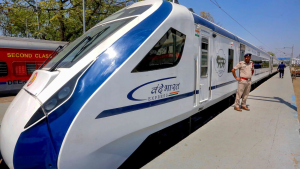
PQWL (Pooled Quota Waiting List) in Indian Railways: Confirmation Chances and Ticketing Insights
Indian Railways is one of the world’s largest rail networks, transporting millions of passengers across the country daily. Ticket booking in Indian Railways involves a complex reservation system that includes different quotas to manage the high demand for seats. Among these, the Pooled Quota Waiting List, or PQWL, is often a source of confusion for travelers trying to gauge their chances of ticket confirmation. This article delves into the details of the PQWL, explores factors affecting ticket confirmation chances, and offers insights on strategies that travelers can use to improve their likelihood of securing a seat.
What is the Pooled Quota Waiting List (PQWL)?
The Pooled Quota Waiting List (PQWL) is a specific type of waiting list used by Indian Railways for certain trains, particularly those operating across multiple cities. In the railway reservation system, various quotas exist to allocate seats for different categories of passengers, such as the General Quota, Ladies Quota, and Senior Citizen Quota. Among these, PQWL is a specialized waiting list reserved for passengers traveling between intermediate stations, rather than from the train’s origin to its destination.
Unlike General Quota Waiting List (GNWL), which is reserved for passengers starting their journey from the originating station, PQWL is designed for passengers boarding and alighting at intermediate stops. This quota allows passengers on these routes a fair opportunity to secure a seat. However, PQWL operates with a smaller seat allocation than GNWL, which can impact ticket confirmation chances for travelers booking under this quota.
How the PQWL System Works
In the Indian Railways reservation system, when a train’s available seats for a particular route are filled, the ticketing system places additional passengers on a waiting list. If the journey is from one intermediate station to another intermediate station, PQWL becomes applicable. Here’s how the process generally works:
Booking and Waitlist Placement: When a ticket is booked for a route with no available confirmed seats, the passenger is placed on a waiting list. If the journey falls under PQWL, the passenger is assigned a PQWL number, which reflects their position on this specific waiting list.
Ticket Confirmation Priority: PQWL does not receive as many cancellations or free seats as the GNWL. This is due to the limited number of seats set aside for intermediate routes, as a majority of seats are reserved for passengers traveling longer distances. Therefore, passengers on PQWL have lower chances of confirmation compared to those on GNWL, which receives priority for seat allotments during cancellations.
Chart Preparation: Indian Railways prepares a “chart” of confirmed passengers around four hours before the train departs. Passengers on PQWL will only receive confirmation if seats become available after all GNWL requests have been fulfilled. If a PQWL ticket remains unconfirmed after the final chart is prepared, the ticket is automatically canceled for passengers who booked online, and they receive a refund.
Quota Pooling: PQWL seats are pooled among various sections of the journey, meaning they are not specific to any single leg of the route. Thus, the seats may be re-allocated to other passengers if cancellations occur, but priority is usually given to GNWL passengers before PQWL travelers receive confirmation.
Factors Affecting Confirmation Chances for PQWL Tickets
The likelihood of a PQWL ticket being confirmed varies and depends on several factors. Here are the main elements that can influence PQWL ticket confirmation:
Train Popularity and Route Demand: If the train is highly popular or if the route sees a large volume of passengers, the chances of PQWL confirmation decrease. Trains with high demand are more likely to have filled quotas, making it harder for PQWL passengers to get confirmed seats.
Length of Journey: PQWL is usually assigned to passengers covering shorter distances within a route. However, shorter journeys generally have a smaller quota, meaning fewer seats are available for intermediate stops. Therefore, if there are fewer cancellations, it is harder for a PQWL passenger to secure a confirmed seat.
Booking Timing: Tickets booked at the beginning of the reservation period (120 days prior to the journey) have better chances of moving up the waiting list. Booking early provides a higher waitlist position, which improves the probability of confirmation if seats open up closer to the travel date.
Class of Travel: Confirmation chances for PQWL tickets vary depending on the travel class. Lower classes like Sleeper Class (SL) often have more turnover and cancellations than higher classes like AC-1 or AC-2. Thus, PQWL tickets in Sleeper Class may have a slightly better chance of being confirmed.
Cancellation Rates and Chart Preparation: Cancellations play a crucial role in clearing waitlists. If there are a higher number of cancellations closer to the journey date, PQWL tickets are more likely to get confirmed. Additionally, since the final passenger chart is prepared only hours before departure, some last-minute cancellations can result in PQWL confirmations at the very end.
Availability of RAC: If the train has a high number of Reservation Against Cancellation (RAC) seats, PQWL passengers may face challenges in securing confirmed berths. RAC tickets are offered to GNWL passengers first, and if these RAC tickets are not converted into confirmed seats, they reduce the chances of confirmation for PQWL tickets.
PQWL vs. Other Waiting Lists: Key Differences
Understanding the differences between PQWL and other types of waiting lists can help travelers make informed decisions:
General Quota Waiting List (GNWL):
Applies to passengers booking from the originating station.
Higher confirmation chances compared to PQWL, as GNWL receives priority for cancellations.
Remote Location Waiting List (RLWL):
Applicable to passengers boarding from stations away from the originating point but not at intermediate stations.
RLWL has a slightly better confirmation rate than PQWL due to a higher allocation of seats.
Tatkal Waiting List (TQWL):
Tatkal quotas are set aside for last-minute bookings but are reserved for specific routes.
Lower confirmation chances compared to GNWL but similar to PQWL.
Strategies to Improve PQWL Confirmation Chances
Booking Early: Securing a higher position on the PQWL can improve your confirmation chances. Tickets booked at the beginning of the reservation period are more likely to move up the waiting list as the journey date approaches.
Choosing Alternate Routes or Trains: If the PQWL confirmation chances seem low, travelers may consider booking an alternate route or choosing a train with lower demand. Off-peak timings or lesser-known trains may have higher seat availability and lower competition.
Opting for Tatkal if Needed: Tatkal tickets may be a viable alternative if the PQWL status remains low closer to the travel date. Tatkal offers a separate quota, which can be beneficial if passengers are flexible with their budget.
Checking Train Classes: If your PQWL status is low in a specific class, consider switching to another class with fewer PQWL bookings. For instance, Sleeper Class may have better availability than AC classes in some trains, though this varies by train and route.
Booking Through RAC When Available: For higher confirmation chances, passengers may prefer booking under Reservation Against Cancellation (RAC) rather than a waiting list. RAC ensures at least a seat, even if a full berth is unavailable, and offers a better chance of confirmation.
Monitoring Seat Availability on IRCTC App or Website: Indian Railways provides live tracking of waitlist and seat availability. Keeping an eye on the IRCTC app can help travelers monitor their position on the waiting list, adjust plans if necessary, or opt for last-minute alternate arrangements.
Predicting PQWL Confirmation Probability with Technology
The IRCTC platform provides insights into confirmation probabilities, helping passengers gauge their chances better. Additionally, third-party apps and websites offer prediction tools that use historical data and algorithms to calculate the likelihood of confirmation based on factors like train popularity, route, and waitlist trends.
Several predictive tools rely on machine learning algorithms trained on past travel data, which can give an estimate of a ticket’s confirmation chances. These tools often analyze factors like historical cancellation rates, passenger behavior patterns, and seasonal trends to provide a percentage probability of confirmation. Though not guaranteed, these tools can offer a helpful indication, allowing passengers to make more informed decisions.
Frequently Asked Questions about PQWL
Is PQWL confirmation less likely than GNWL?
Yes, PQWL confirmations are generally less frequent than GNWL because GNWL receives priority for seat allocations during cancellations.
Can I travel on an unconfirmed PQWL ticket?
No, an unconfirmed PQWL ticket is automatically canceled, and passengers cannot board the train. The fare is refunded for online bookings.
Does the type of train affect PQWL confirmation chances?
Yes, high-demand trains (like Rajdhani or Duronto) often have lower PQWL confirmation chances compared to regular trains due to limited intermediate stop quotas.
How many times are waiting lists checked before confirmation?
Indian Railways prepares a final chart about four hours before departure. PQWL tickets are reviewed for confirmation based on seat availability up to this point.
The Pooled Quota Waiting List (PQWL) plays a vital role in Indian Railways’ ticketing system, offering an opportunity for passengers traveling on shorter or intermediate routes. While PQWL confirmation chances are typically lower than those for other quotas, travelers can use strategies like booking early, monitoring availability, and considering alternative routes to enhance their likelihood of securing a seat. By understanding the factors influencing PQWL and exploring predictive tools

Leave a Reply